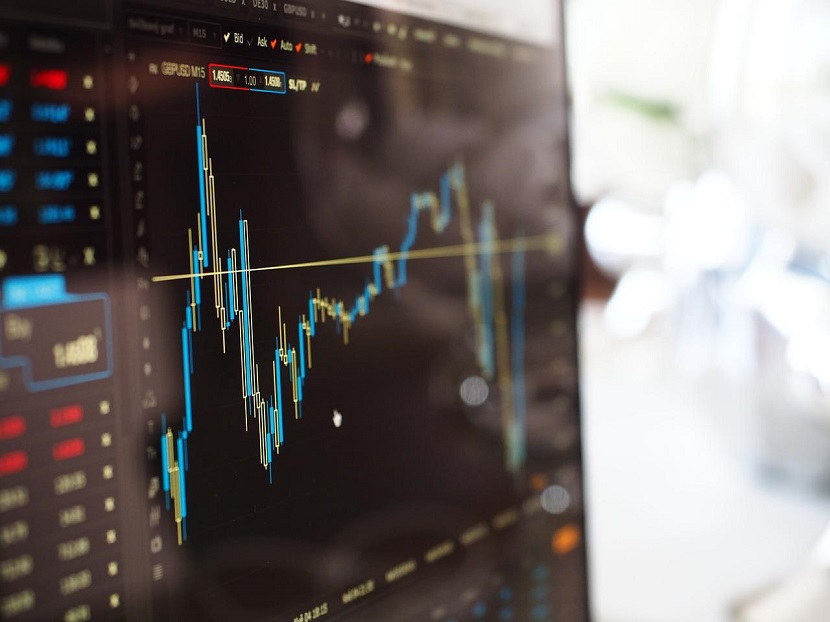Traders hoping to buy the drop may want to consider investing in ETFs that continue to provide exposure to traditional large-cap companies. In 2022, safe haven assets and defensive sectors such as utilities, healthcare, consumer staples, and gold performed significantly better than the entire US market.
Seven of the 15 ETFs with the biggest YTD gains we chose were invested in energy companies. It was an outperforming sector in a year when the S&P 500 plummeted 21% and every other of the 11 Global Industry Classification Standard (GICS) classes sank or moved little. The explanation is that crude oil prices increased by more than 55% from January to March, while natural gas prices increased by more than 130% from January to the high in August.
Half of the top performers are energy ETFs
The majority of the gains were attributed to Russia’s invasion of Ukraine in February, which sparked a surge in oil prices as the United States and the European Union sought to curtail Russian energy exports. In October, OPEC+ announced a 2 million barrel per day cut in oil output, substantially reducing global supplies. Prices fell at the end of the year as China’s pandemic lockdown and a worldwide economic slump lowered demand. This has impacted the performance of energy ETFs for 2022, whose returns have fallen dramatically as a result of the drop in energy prices.
There are several leveraged exchange-traded funds among these 15 ETFs. It is a tradable product that employs financial derivatives and debt to boost the returns of an underlying index. A leveraged ETF may aim for a 2:1 or 3:1 ratio, whereas a regular ETF normally tracks the equities in its underlying index one-to-one. This category includes ETFs that invest in real estate, technology, and developing markets, such as the Direxion Daily MSCI Emerging Markets Bear 3X Shares ETF.
We chose the top 15 ETFs based on their YTD total return as of the market close on December 28, 2022. All of the information below is current as of that date.

1. Direxion Daily Energy Bull 2X Shares
Direxion Daily Energy Bull 2X Shares (NYSE:ERX) is a leveraged ETF that aims daily investment returns before fees and costs, or 200% of the inversion of the performance of the S&P Dow Jones Indices Energy Select Sector Index, which comprises domestic energy firms. In other words, for every 1% increase in the underlying index, ERX seeks to achieve a 2% increase. Direxion Daily Energy Bull 2X Shares ETF was established in 2008 and has a 0.94% cost ratio.
- YTD 2022 return: 105.02%
- Assets under management: $603.6M
- Expense ratio: 0.94%
2. ProShares Ultra Oil & Gas
ProShares Ultra Oil & Gas (NYSE:DIG) aims daily investment returns that are twice as good as the Dow Jones U.S. Oil & GasSM Index. The fund debuted on January 30, 2007, and has a gross expense ratio of 0.99%. Its portfolio contains 42 holdings and offers a dividend yield of 4.09% with a quarterly payout frequency. Oil, Gas & Consumable Fuels, Energy Equipment & Services, Semiconductors & Semiconductor Equipment, Electrical Equipment, and Electric Utilities are the primary sectors in which ProShares Ultra Oil & Gas invests.
- YTD 2022 return: 102.46%
- Assets under management: $148.4M
- Expense ratio: 0.99%
3. ProShares UltraPro Short QQQ
ProShares UltraPro Short QQQ (NASDAQ:SQQQ) targets daily investment returns that are three times the inverse (-3x) of the NASDAQ 100 Index, which measures the largest domestic and foreign non-financial corporations listed on The Nasdaq Stock Market. The cost ratio for ProShares UltraPro Short QQQ is 0.98%. The fund was launched in 2010 and pays quarterly payouts to shareholders. It is one of the most successful ETFs to consider.
- YTD 2022 return: 102.33%
- Assets under management: $4.12B
- Expense ratio: 0.98%
4. Simplify Interest Rate Hedge
The Simplify Interest Rate Hedge ETF (NYSE:PFIX) seeks to hedge interest rate changes caused by rising long-term interest rates while also profiting from market stress when fixed income volatility rises. The ETF has a sizable position in over-the-counter (OTC) interest rate options, which provide direct and transparent convex exposure to large increases in interest rates and volatility. Simplify Interest Rate Hedge ETF has a 0.50% cost ratio and total assets of more than $355 million as of December 28. The fund pays out dividends monthly and has a 30-day SEC yield of 2.26%. Simplify Interest Rate Hedge is one of the top performing ETFs this year, with shares up more than 86% year to date as of December 28.
- YTD 2022 return: 86.85%
- Assets under management: $700M
- Expense ratio: 0.50%
5. ProShares UltraShort 20+ Year Treasury
ProShares UltraShort 20+ Year Treasury (NYSE:TBT) seeks daily investment returns before fees and costs that are two times the inverse (-2x) of the ICE U.S. Treasury 20+ Year Bond Index’s daily performance. The benchmark index consists of publicly traded US Treasury securities with a remaining maturity of more than twenty years and a face value of $300 million or more. The fund was founded on April 29, 2008, and it has an expense ratio of 0.89%.
- YTD 2022 return: 83.0%
- Assets under management: $802.4M
- Expense ratio: 0.89%
6. iShares MSCI Turkey ETF
The IShares MSCI Turkey ETF (TUR) tries to replicate the performance of a Turkish stock market-cap-weighted index. This fund’s recent outperformance can be explained in part by the Turkish government’s central bank rate reduction, despite the country’s high inflation.
- YTD 2022 return: 79.24%
- Assets under management: $345.80M
- Expense ratio: 0.57%

7. ProShares UltraShort Technology
The ProShares UltraShort Technology ETF (NYSE:REW) targets daily investment outcomes that are two times the inverse (-2x) of the daily performance of the Dow Jones U.S. TechnologySM Index, which measures the performance of the U.S. stock market’s technology sector. The fund has a 2.26% gross expense ratio. Its primary investment sectors are Software & Services, Technology Hardware & Equipment, Semiconductors & Semiconductor Equipment, and Media & Entertainment. The portfolio of ProShares UltraShort Technology has 164 stocks.
- YTD 2022 return: 75.65%
- Assets under management: $14.32M
- Expense ratio: 2.26%
8. Direxion Daily Real Estate Bear 3X Shares
Direxion Daily Real Estate Bear 3X Shares (NYSE:DRV) seeks daily investment outcomes equal to 300% of the inverse of the Real Estate Select Sector Index’s performance. Companies in the benchmark include real estate management, real estate development, and real estate investment trusts. The cost ratio of the fund is 0.96%. Direxion Daily Real Estate Bear 3X Shares is one of 2022’s best-performing ETFs, with shares up about 71.5% year to far as of December 28.
- YTD 2022 return: 71.5%
- Assets under management: $208M
- Expense ratio: 0.96%
9. ProShares UltraShort Real Estate
ProShares UltraShort Real Estate (NYSE:SRS) aspires to replicate daily investment outcomes that are two times the opposite (-2x) of the Dow Jones U.S. Real EstateSM Index’s daily performance. ProShares UltraShort Real Estate (NYSE:SRS) was established on January 30, 2007, and it has a 1.41% gross expense ratio. Equity Real Estate Investment Trusts, Real Estate Management & Development, Professional Services, and Mortgage Real Estate Investment Trusts are the industries in which ProShares UltraShort Real Estate invests.
- YTD 2022 return: 55.68%
- Assets under management: $57.33M
- Expense ratio: 1.41%
10. Direxion Daily MSCI Emerging Markets Bear 3X Shares
Direxion Daily MSCI Emerging Markets Bear 3X Shares (NYSE:EDZ) strives to replicate daily investment returns or 300% of the opposite of the MSCI Emerging Markets IndexSM performance. The benchmark is a market capitalization weighted index based on free float that captures the performance of big and mid-capitalization securities in developing economies. Direxion Daily MSCI Emerging Markets Bear 3X Shares has a 1.28% cost ratio. It primarily invests in China, India, Taiwan, Korea, and Brazil, among other places.
- YTD 2022 return: 53.85%
- Assets under management: $36.36M
- Expense ratio: 1.28%

11. Energy Select Sector SPDR Fund
The Energy Select Sector SPDR Fund (XLE) invests in a market-cap-weighted index of S&P 500 energy businesses across all energy sub-sectors. XLE is the market’s largest energy sector ETF.
- YTD 2022 return: 50.33%
- Assets under management: $39.32B
- Expense ratio: 0.10%
12. Fidelity MSCI Index Energy Index ETF
The Fidelity MSCI Index Energy Index ETF (FENY) monitors a market-cap-weighted index of energy businesses in the United States. The index contains firms that MSCI believes are investable and covers 98% of the sector. The fund’s extensive diversification within the energy sector is a distinguishing feature.
- YTD 2022 return: 49.33%
- Assets under management: $1.58B
- Expense ratio: 0.08%
13. VanEck Oil Services ETF
The VanEck Oil Services ETF (OIH) tracks a market-cap-weighted index of 25 of the top publicly traded oil services businesses in the United States. When the greatest businesses perform well, this restricted exposure can yield outsized profits; nevertheless, downside risk can be significant.
- YTD 2022 return: 49.12%
- Assets under management: $2.47B
- Expense ratio: 0.35%
14. Vanguard Energy ETF
The Vanguard Energy ETF (VDE) invests in a market capitalization-weighted index of US energy businesses. The index contains firms that MSCI believes are investable and covers 98% of the market. Because VDE is capitalization-weighted, stockholders have the most exposure to the largest energy businesses.
- YTD 2022 return: 48.74%
- Assets under management: $8.07B
- Expense ratio: 0.10%
15. iShares U.S. Energy ETF
The iShares U.S. Energy ETF (IYE) tracks a market-cap-weighted index of large-cap US energy businesses. IYE is one of the market’s earliest energy ETFs, having opened to new investors in June of 2000.
- YTD 2022 return: 47.58%
- Assets under management: $2.41B
- Expense ratio: 0.39%



